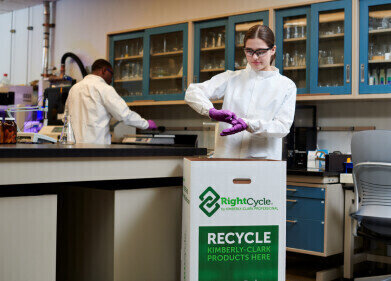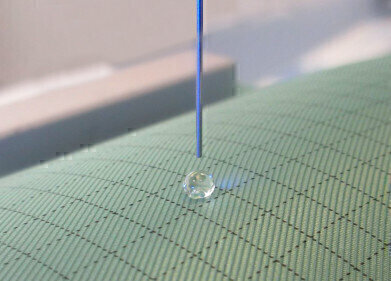Clothing
Independent Tests Confirm Fabric Permeation Resistance to Chemicals in Protective Clothing
Apr 24 2012
Recent tests conducted by an independent accredited laboratory show that Tyvek® L1431N fabric has a high barrier performance that provides excellent protection against liquid permeation. To most people all protective coveralls look the same and selecting the correct one to offer the best protection against liquid penetration and permeation can be a task in itself. And so to assess the barrier performance and therefore aid selection, permeation tests (according to EN ISO 6529 – Method A) were conducted to determine the breakthrough times of commonly used chemicals with
Tyvek®, MPF (Microporous Film) and SMS (Spunbond-Meltblown-Spunbond) – materials that are frequently used for type 4, 5, and 6 single-use chemical protective clothing.
To conduct the permeation test and determine the actual and normalised breakthrough times, 40% sodium hydroxide and 18% sulphuric acid, two commonly used chemicals in the industry, were selected. With a breakthrough time of over 480 minutes with two water-based inorganic chemicals, Tyvek® offered a higher barrier than the Microporous film, while SMS showed immediate breakthrough. Penetration tests were also conducted according to EN ISO 6530 standard and showed virtually no difference between the three materials, indicating the liquid barrier of the three materials seems to be of equal protection. However, this standard stipulates just one minute of exposure to the
hazardous substance, which is rarely the case in working conditions. When tested according to EN ISO 6529 - Method A, that determines the resistance of materials to permeation by liquids and gases, it was revealed that Tyvek® offers
long-term protection of up to eight hours. Tyvek® is an excellent material because the continuous, strong, high density polyethylene fibres do not shed and it does not contain additives or fillers. This smooth surface repels both liquids and particles, offering a very high chemical barrier in its category. Tyvek® is also extremely durable, highly resistant to tear and abrasion but still breathable and because of the smooth surface of the finished fabric it remains soft to touch and is extremely flexible, not restricting movement. To help customers make the right choice, DuPont has developed a series of videos featuring Professor Victor Tytonius, the cyber scientist who specialises in worker protection and chemical protective clothing and materials. Professor Tytonius carries out scientific experiments to reveal the performance of three non-woven structures – Tyvek®, MPF and SMS. The range of Tyvek® garments includes Tyvek® Industry, Tyvek® Classic and Classic Plus, Tyvek® Dual and most recently Tyvek® Labo.
Digital Edition
Lab Asia 31.2 April 2024
April 2024
In This Edition Chromatography Articles - Approaches to troubleshooting an SPE method for the analysis of oligonucleotides (pt i) - High-precision liquid flow processes demand full fluidic c...
View all digital editions
Events
Apr 25 2024 Istanbul, Turkey
Apr 28 2024 Montreal, Quebec, Canada
May 05 2024 Seville, Spain
InformEx Zone at CPhl North America
May 07 2024 Pennsylvania, PA, USA
May 14 2024 Oklahoma City, OK, USA



















